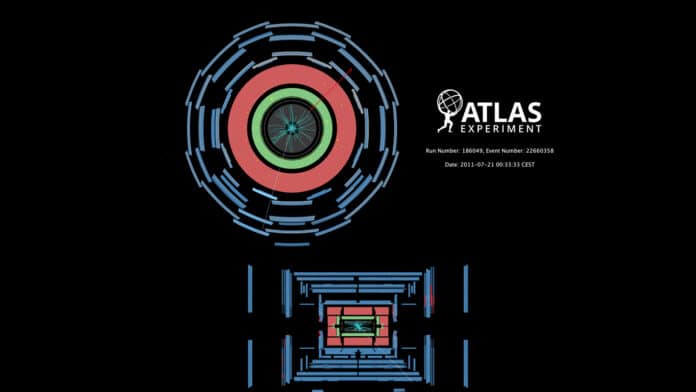The W boson is a fundamental particle. It is the fourth heaviest particle in the Standard Model, and its mass relies on the Brout-Englert-Higgs mechanism.
The W boson mass is one of the most interesting fundamental parameters of the Standard Model of particle physics, as it allows for model-independent probes for the effects of new physics.
ATLAS captured a sample of W bosons when the LHC was operating at a collision energy of 7 TeV in 2011. In 2017, ATLAS published its first measurement of the W boson mass. With a 19 MeV uncertainty, the W boson mass came at 80370 MeV.
In a new study, except the most recent measurement from the CDF experiment at the Tevatron, a former accelerator at Fermilab, the new ATLAS measurement agrees with and is more accurate than all earlier W mass measurements.
The measurement is based on a reanalysis of a sample of 14 million W boson candidates produced in proton–proton collisions at the Large Hadron Collider (LHC), CERN’s flagship particle accelerator.
In its latest research, ATLAS reanalyzed its sample of W bosons from 2011 to increase the accuracy of its earlier measurement. The new W boson mass, 80360 MeV with a 16 MeV uncertainty, is 10 MeV lower and 16% more accurate than the previous ATLAS finding. The outcome is consistent with the Standard Model.
ATLAS spokesperson Andreas Hoecker said, “To attain this result, ATLAS used an advanced data-fitting technique to determine the mass, as well as more recent, improved versions of what is known as the parton distribution functions of the proton. These functions describe the sharing of the proton’s momentum amongst its constituent quarks and gluons. In addition, ATLAS verified the theoretical description of the W boson production process using dedicated LHC proton–proton runs.”
“Due to an undetected neutrino in the particle’s decay, the W mass measurement is among the most challenging precision measurements performed at hadron colliders. It requires extremely accurate calibration of the measured particle energies and momenta and a careful assessment and excellent control of modeling uncertainties. This updated result from ATLAS provides a stringent test and confirms the consistency of our theoretical understanding of electroweak interactions.”
Journal Reference:
- The ATLAS collaboration. Improved W boson Mass Measurement using 7 TeV Proton-Proton Collisions with the ATLAS Detector.
